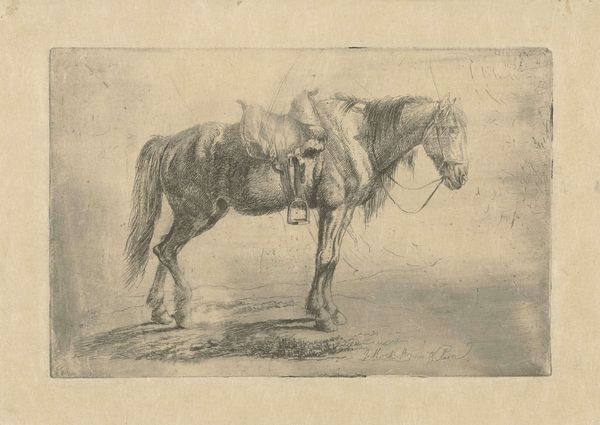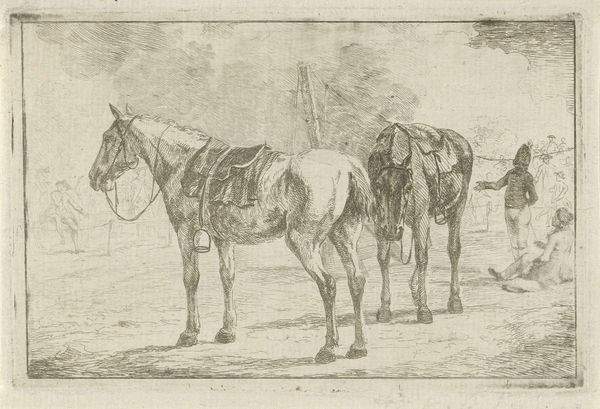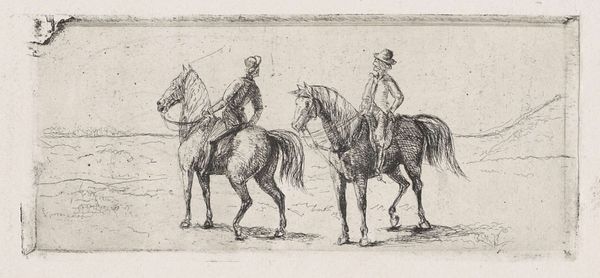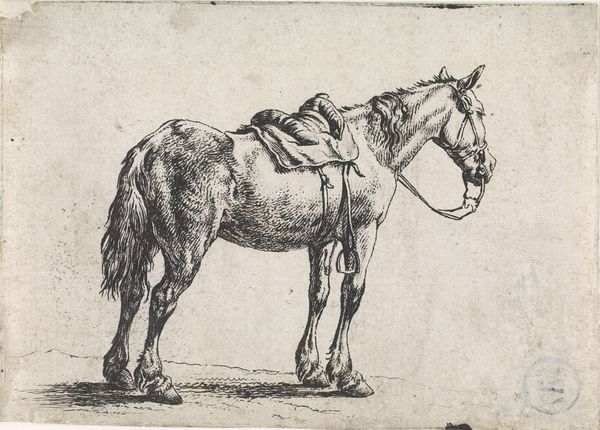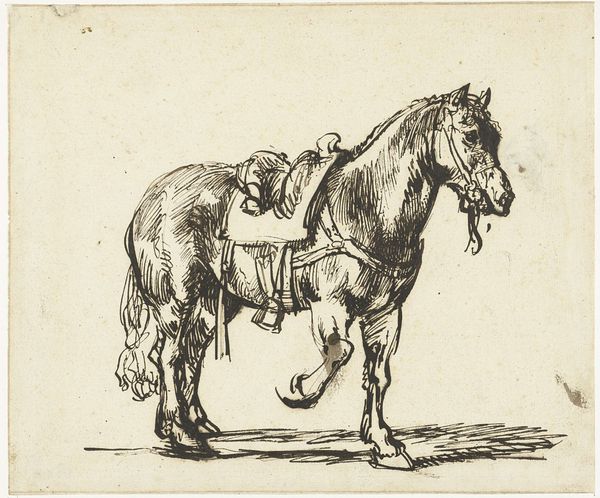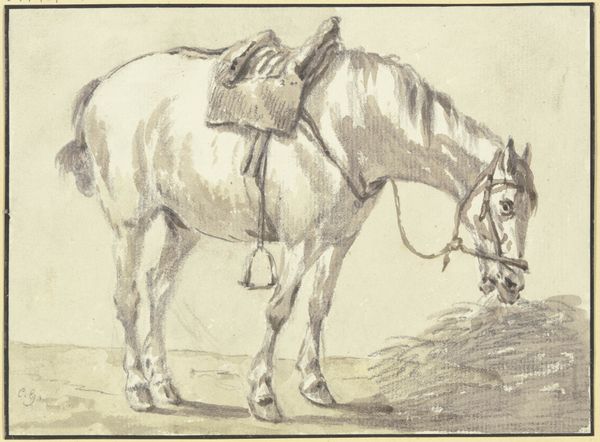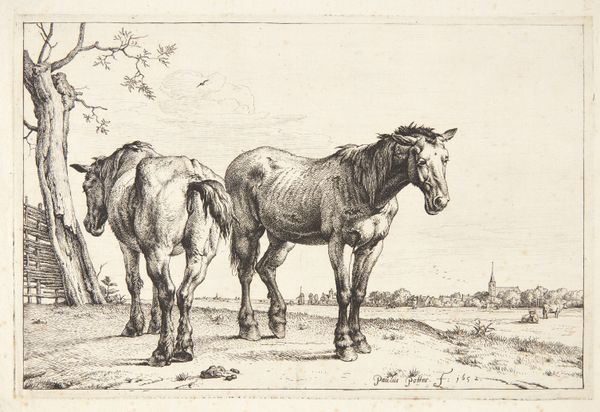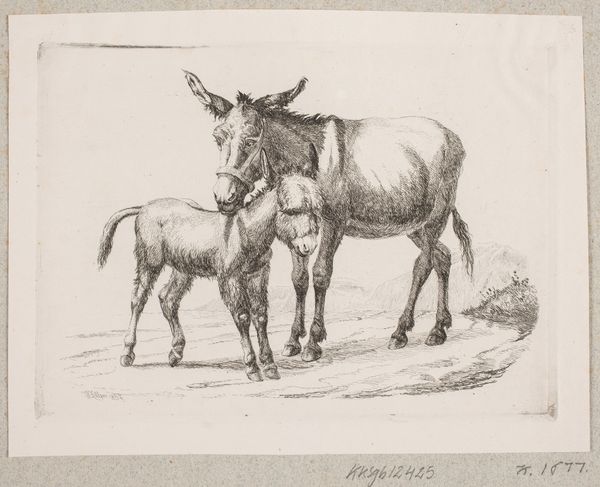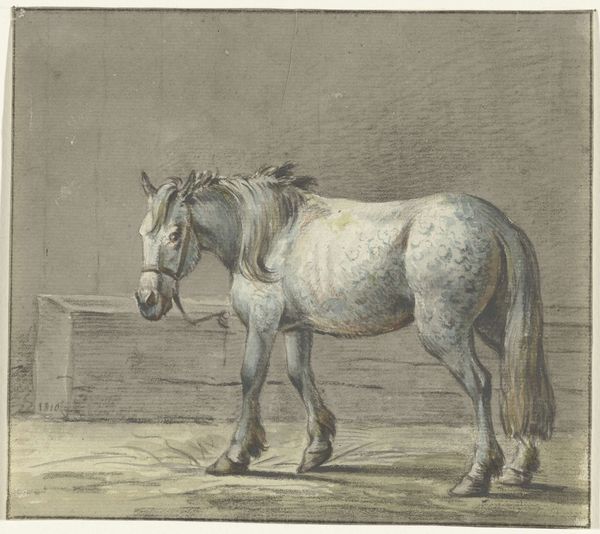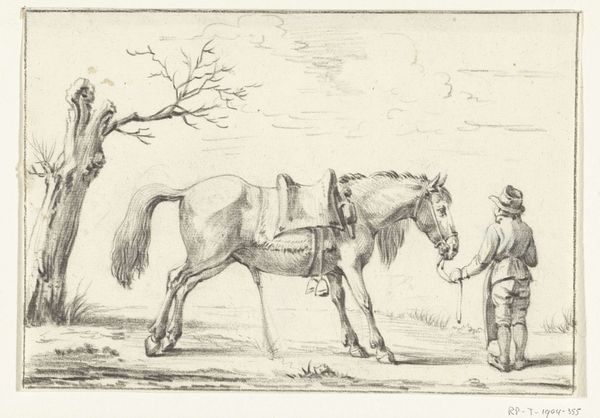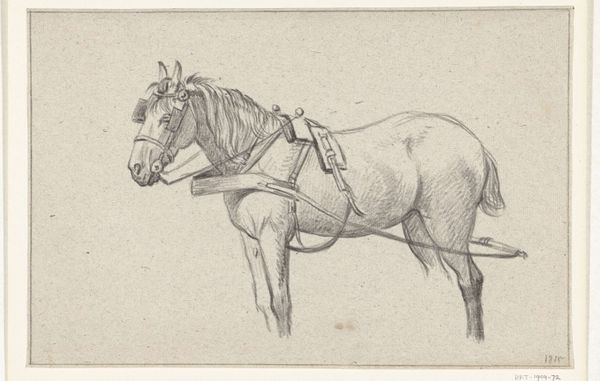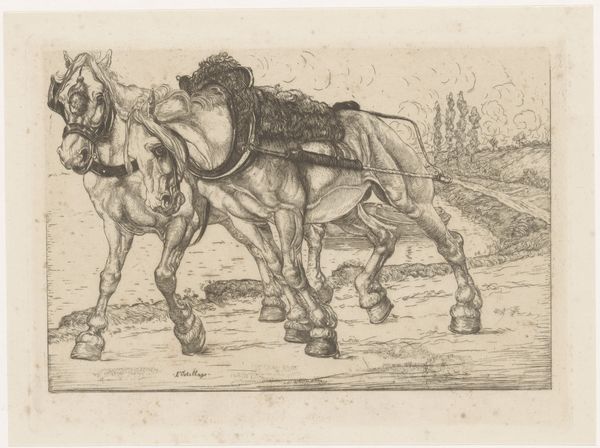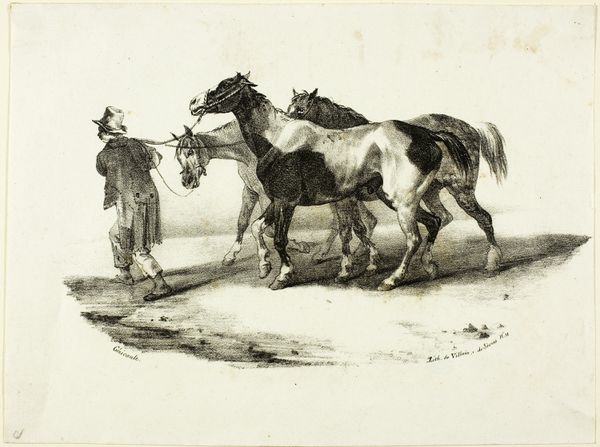
drawing, ink
#
drawing
#
baroque
#
animal
#
landscape
#
ink
#
pen-ink sketch
#
genre-painting
Dimensions: height 194 mm, width 250 mm
Copyright: Rijks Museum: Open Domain
Curator: We’re now looking at "Twee tuigpaarden bij een kar," or "Two Harness Horses by a Cart," an ink drawing attributed to Pieter van Bloemen, dating sometime between 1667 and 1720. It's a classic example of Baroque artistry, right here at the Rijksmuseum. Editor: It feels so quiet. The muted tones, the almost sketched-like quality. They are heavy beasts in monochrome—it gives you this impression of weariness. Are they resting? What is the nature of their labour? Curator: Van Bloemen was known for his animal paintings, especially horses. During this period, there's a growing appreciation for depicting working animals. Here, he gives us a glimpse into the everyday lives of horses vital to trade and transportation in the Dutch Republic. This wasn't just art; it was a reflection of societal values. Editor: Precisely. But it is the quietness I keep circling back to. What were their lives actually like? How were these animals treated? Do these quiet moments of rest alleviate the conditions in which the powerful exploit living creatures? The image romanticizes the idea of beasts of burden within a burgeoning capitalist landscape, without grappling with the moral dimensions. Curator: It does offer a more intimate perspective compared to heroic equestrian portraits favored by the aristocracy. These are working horses, part of the social fabric, even. Van Bloemen is presenting them in a somewhat dignified manner, considering their place in the socio-economic structure. It acknowledges their importance. Editor: But I think that very 'acknowledgment' masks the systemic exploitation. By softening the edges, as with the artistic technique used, we risk glossing over uncomfortable realities about the animals' lives. Perhaps what speaks most loudly here is not the skill with ink, but what this deliberate choice of representation conceals. Curator: That's a potent observation, that tension between visibility and omission. It makes us think critically about art's role in both reflecting and shaping societal perceptions. Editor: Right. And perhaps the quietude encourages a space to consider all of the stories implied but left unsaid.
Comments
No comments
Be the first to comment and join the conversation on the ultimate creative platform.

